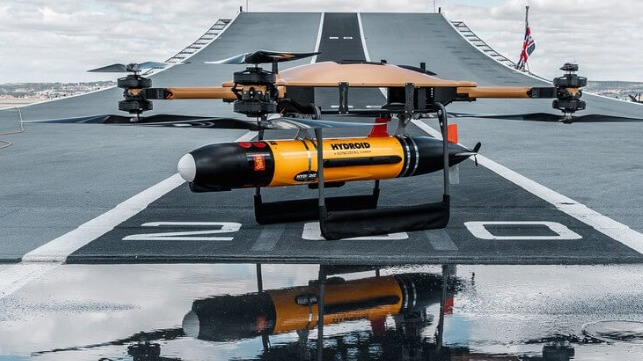NATO Steps Up Baltic Sea Patrols After Damage to Subsea Infrastructure

NATO reports working with its Allies they plan to step up patrols in the Baltic Sea following the recent damage to undersea infrastructure in the region. The move comes 10 days after Finland reported damage to a key pipeline running on the seafloor, and Sweden later reported a subsea telecom cable had also been damaged.
These incidents came 13 months after the Nord Steam pipeline was also damaged in the Baltic. While it is widely believed the pipeline was sabotaged, investigators so far have failed to confirm the identity of the perpetrators. At the same time, the incidents highlighted the vulnerability of key assets and infrastructure.
“We continue to monitor the situation closely, and we remain in close contact with our Allies Estonia and Finland, and our partner Sweden,” said acting NATO spokesperson Dylan White. “NATO will continue to adapt its maritime posture in the Baltic Sea and will take all necessary steps to keep Allies safe.”
Since the Nord Stream sabotage in September 2022, NATO has enhanced patrols near critical undersea infrastructure and has promoted technological innovation – including with drones – to better detect any suspicious activity. In response to the latest incidents, NATO reports it is further increasing measures including additional surveillance and reconnaissance flights. They are deploying maritime patrol aircraft, NATO AWACS planes, and drones. A fleet of four NATO minehunters is also being dispatched to the area.

NATO AWACS are increasing patrols over the Baltic (NATO)
Last week, NATO Defense Ministers and the Swedish Defense Minister endorsed the Digital Ocean Vision, a further long-term initiative to enhance NATO’s maritime situational awareness. According to NATO’s spokesperson, the Digital Ocean initiative will transform Allied maritime domain awareness by enhancing coordination between national and Allied capabilities employed for maritime surveillance. This includes a broad range of assets from satellites to autonomous systems below, on, and above the sea.
At the Vilnius Summit on October 12, NATO leaders agreed to establish NATO’s Maritime Center for the Security of Critical Undersea Infrastructure within NATO’s Maritime Command (MARCOM) in the United Kingdom, to increase our situational awareness and enhance deterrence and defense in the maritime domain. Earlier this year, NATO created a Critical Undersea Infrastructure Coordination Cell at NATO Headquarters in Brussels to improve information sharing and exchange best practices between NATO Allies, partners, and the private sector. The Digital Ocean Vision initiative will further enhance maritime situational awareness for the security of critical undersea infrastructure.

that matters most
Get the latest maritime news delivered to your inbox daily.
As a next step, NATO Allies will develop a roadmap to guide the future development of maritime capabilities in line with other efforts across the Alliance, including NATO’s Digital Transformation and the Defense Production Action Plan.
The UK Prime Minister has long been critical of the efforts to protect subsea assets, including developing a detailed position paper on vulnerabilities. Last year, after becoming Prime Minister, Rishi Sunak accelerated plans to acquire and deploy two former commercial offshore vessels to increase the UK’s surveillance efforts. The Royal Navy recently commissioned both of the vessels, one focusing on protecting subsea assets, while the other is being used as part of efforts to hunt out mines.
